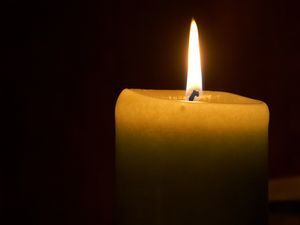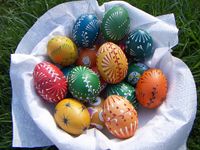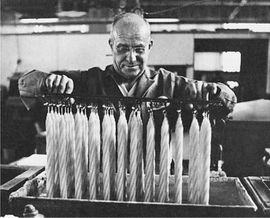شمع
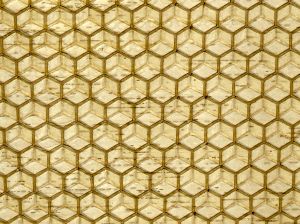
الشموع waxes مواد صلبة، مختلفة الألوان، تتألف من ليبيدات بسيطة واستيرات الحموض الدسمة ذات الأعداد الشفعية لذرات الكربون، وطويلة السلاسل مع الأغوال، وأحادية الهيدروكسيل طويلة السلاسل، ذات الأعداد الزوجية لذرات الكربون. They include higher alkanes and lipids, typically with melting points above about 40 °C (104 °F), melting to give low viscosity liquids. Waxes are insoluble in water but soluble in nonpolar organic solvents such as hexane, benzene and chloroform. Natural waxes of different types are produced by plants and animals and occur in petroleum.
. . . . . . . . . . . . . . . . . . . . . . . . . . . . . . . . . . . . . . . . . . . . . . . . . . . . . . . . . . . . . . . . . . . . . . . . . . . . . . . . . . . . . . . . . . . . . . . . . . . . . . . . . . . . . . . . . . . . . . . . . . . . . . . . . . . . . . . . . . . . . . . . . . . . . . . . . . . . . . . . . . . . . . . .
Chemistry
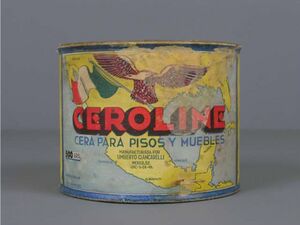
Waxes are organic compounds that characteristically consist of long aliphatic alkyl chains, although aromatic compounds may also be present. Natural waxes may contain unsaturated bonds and include various functional groups such as fatty acids, primary and secondary alcohols, ketones, aldehydes and fatty acid esters. Synthetic waxes often consist of homologous series of long-chain aliphatic hydrocarbons (alkanes or paraffins) that lack functional groups.[1]
Plant and animal waxes
Waxes are synthesized by many plants and animals. Those of animal origin typically consist of wax esters derived from a variety of fatty acids and carboxylic alcohols. In waxes of plant origin, characteristic mixtures of unesterified hydrocarbons may predominate over esters.[2] The composition depends not only on species, but also on geographic location of the organism.
Animal waxes
The best-known animal wax is beeswax used in constructing the honeycombs of beehives, but other insects also secrete waxes. A major component of beeswax is myricyl palmitate which is an ester of triacontanol and palmitic acid. Its melting point is 62-65 °C. Spermaceti occurs in large amounts in the head oil of the sperm whale. One of its main constituents is cetyl palmitate, another ester of a fatty acid and a fatty alcohol. Lanolin is a wax obtained from wool, consisting of esters of sterols.[1]
Plant waxes
Plants secrete waxes into and on the surface of their cuticles as a way to control evaporation, wettability and hydration.[3] The epicuticular waxes of plants are mixtures of substituted long-chain aliphatic hydrocarbons, containing alkanes, alkyl esters, fatty acids, primary and secondary alcohols, diols, ketones and aldehydes.[2] From the commercial perspective, the most important plant wax is carnauba wax, a hard wax obtained from the Brazilian palm Copernicia prunifera. Containing the ester myricyl cerotate, it has many applications, such as confectionery and other food coatings, car and furniture polish, floss coating, and surfboard wax. Other more specialized vegetable waxes include jojoba oil, candelilla wax and ouricury wax.
Modified plant and animal waxes
Plant and animal based waxes or oils can undergo selective chemical modifications to produce waxes with more desirable properties than are available in the unmodified starting material.[4] This approach has relied on green chemistry approaches including olefin metathesis and enzymatic reactions and can be used to produce waxes from inexpensive starting materials like vegetable oils.[5][6]
Petroleum derived waxes
Although many natural waxes contain esters, paraffin waxes are hydrocarbons, mixtures of alkanes usually in a homologous series of chain lengths. These materials represent a significant fraction of petroleum. They are refined by vacuum distillation. Paraffin waxes are mixtures of saturated n- and iso- alkanes, naphthenes, and alkyl- and naphthene-substituted aromatic compounds. A typical alkane paraffin wax chemical composition comprises hydrocarbons with the general formula CnH2n+2, such as hentriacontane, C31H64. The degree of branching has an important influence on the properties. Microcrystalline wax is a lesser produced petroleum based wax that contains higher percentage of isoparaffinic (branched) hydrocarbons and naphthenic hydrocarbons.
Millions of tons of paraffin waxes are produced annually. They are used in foods (such as chewing gum and cheese wrapping), in candles and cosmetics, as non-stick and waterproofing coatings and in polishes.
Montan wax
Montan wax is a fossilized wax extracted from coal and lignite.[7] It is very hard, reflecting the high concentration of saturated fatty acids and alcohols. Although dark brown and odorous, they can be purified and bleached to give commercially useful products.
اعتبارا من 1995[تحديث], about 200 million kilograms of polyethylene waxes were consumed annually.[3]
Polyethylene waxes are manufactured by one of three methods:
- The direct polymerization of ethylene, potentially including co-monomers also;
- The thermal degradation of high molecular weight polyethylene resin;
- The recovery of low molecular weight fractions from high molecular weight resin production.
Each production technique generates products with slightly different properties. Key properties of low molecular weight polyethylene waxes are viscosity, density and melt point.
Polyethylene waxes produced by means of degradation or recovery from polyethylene resin streams contain very low molecular weight materials that must be removed to prevent volatilization and potential fire hazards during use. Polyethylene waxes manufactured by this method are usually stripped of low molecular weight fractions to yield a flash point >500°F (>260°C). Many polyethylene resin plants produce a low molecular weight stream often referred to as Low Polymer Wax (LPW). LPW is unrefined and contains volatile oligomers, corrosive catalyst and may contain other foreign material and water. Refining of LPW to produce a polyethylene wax involves removal of oligomers and hazardous catalyst. Proper refining of LPW to produce polyethylene wax is especially important when being used in applications requiring FDA or other regulatory certification.[بحاجة لمصدر]
Uses
Waxes are mainly consumed industrially as components of complex formulations, often for coatings. The main use of polyethylene and polypropylene waxes is in the formulation of colourants for plastics. Waxes confer matting effects (i.e., to confer non-glossy finishes) and wear resistance to paints. Polyethylene waxes are incorporated into inks in the form of dispersions to decrease friction. They are employed as release agents, find use as slip agents in furniture, and confer corrosion resistance.[3]
Candles
Waxes such as paraffin wax or beeswax, and hard fats such as tallow are used to make candles, used for lighting and decoration. Another fuel type used in candle manufacturing includes soy. Soy wax is made by the hydrogenation process using soybean oil.
Wax products
Waxes are used as finishes and coatings for wood products.[8] Beeswax is frequently used as a lubricant on drawer slides where wood to wood contact occurs.
Other uses
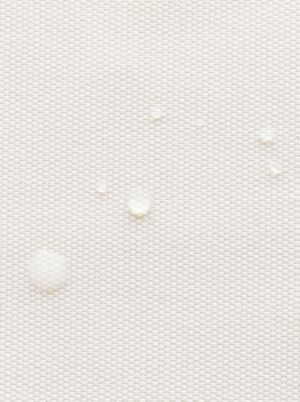
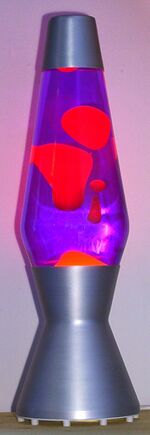
Sealing wax was used to close important documents in the Middle Ages. Wax tablets were used as writing surfaces. There were different types of wax in the Middle Ages, namely four kinds of wax (Ragusan, Montenegro, Byzantine, and Bulgarian), "ordinary" waxes from Spain, Poland, and Riga, unrefined waxes and colored waxes (red, white, and green).[9][10] Waxes are used to make wax paper, impregnating and coating paper and card to waterproof it or make it resistant to staining, or to modify its surface properties. Waxes are also used in shoe polishes, wood polishes, and automotive polishes, as mold release agents in mold making, as a coating for many cheeses, and to waterproof leather and fabric. Wax has been used since antiquity as a temporary, removable model in lost-wax casting of gold, silver and other materials.
Wax with colorful pigments added has been used as a medium in encaustic painting, and is used today in the manufacture of crayons, china markers and colored pencils. Carbon paper, used for making duplicate typewritten documents was coated with carbon black suspended in wax, typically montan wax, but has largely been superseded by photocopiers and computer printers. In another context, lipstick and mascara are blends of various fats and waxes colored with pigments, and both beeswax and lanolin are used in other cosmetics. Ski wax is used in skiing and snowboarding. Also, the sports of surfing and skateboarding[11] often use wax to enhance the performance.
Some waxes are considered food-safe and are used to coat wooden cutting boards and other items that come into contact with food. Beeswax or coloured synthetic wax is used to decorate Easter eggs in Romania, Ukraine, Poland, Lithuania and the Czech Republic. Paraffin wax is used in making chocolate covered sweets.
Wax is also used in wax bullets, which are used as simulation aids.
. . . . . . . . . . . . . . . . . . . . . . . . . . . . . . . . . . . . . . . . . . . . . . . . . . . . . . . . . . . . . . . . . . . . . . . . . . . . . . . . . . . . . . . . . . . . . . . . . . . . . . . . . . . . . . . . . . . . . . . . . . . . . . . . . . . . . . . . . . . . . . . . . . . . . . . . . . . . . . . . . . . . . . . .
Specific examples
Animal waxes
- Beeswax - produced by honey bees
- Chinese wax - produced by the scale insect Ceroplastes ceriferus
- Lanolin (wool wax) - from the sebaceous glands of sheep
- Shellac wax - from the lac insect Kerria lacca
- Spermaceti - from the head cavities and blubber of the sperm whale
Vegetable waxes
- Bayberry wax - from the surface wax of the fruits of the bayberry shrub, Myrica faya
- Candelilla wax - from the Mexican shrubs Euphorbia cerifera and Euphorbia antisyphilitica
- Carnauba wax - from the leaves of the Carnauba palm, Copernicia cerifera
- Castor wax - catalytically hydrogenated castor oil
- Esparto wax - a byproduct of making paper from esparto grass, (Macrochloa tenacissima)
- Japan wax - a vegetable triglyceride (not a true wax), from the berries of Rhus and Toxicodendron species
- Jojoba oil - a liquid wax ester, from the seed of Simmondsia chinensis.
- Ouricury wax - from the Brazilian feather palm, Syagrus coronata.
- Rice bran wax - obtained from rice bran (Oryza sativa)
- Soy wax - from soybean oil
- Tallow Tree wax - from the seeds of the tallow tree Triadica sebifera.
Mineral waxes
- Ceresin waxes
- Montan wax - extracted from lignite and brown coal
- Ozocerite - found in lignite beds
- Peat waxes
Petroleum waxes
- Paraffin wax - made of long-chain alkane hydrocarbons
- Microcrystalline wax - with very fine crystalline structure
تاريخ
ظهرت الشموع في بلاد الصين في مجالس العبادة والطقوس الدينية والصلوات، وكانت تعد مقدسة لرائحتها العطرية عند الاحتراق، واستخدمها المصريون القدماء في تحنيط الموتى، وإضاءة المعابد والمساكن، وصنع التماثيل، وفي الطقوس والعبادات، والزينة والتجميل، والمراهم والدواء. واستخدمها سكان بلاد الرافدين والفينيقيون في صناعة المنسوجات والجلود المقاومة للمياه والتآكل، وانتقلت صناعتها إلى روسيا ورومانيا وأمريكا. وفي بلاد الهند استخرج العنبر المستخدم في الدواء والتجميل من حوت العنبر. واشتهرت أمريكا اللاتينية (وخاصة البرازيل والمكسيك) بالشموع النباتية، كما اشتهر الوطن العربي بالشمع المستخرج من حشائش الإسبارتو Esparto التي تعيش في ليبيا وتونس والجزائر وجنوب إسبانيا. وينتج شمع فاكهة التوت في اليابان وشمع قصب السكر في فرنسا. وقد تطورت صناعة الشموع بتطور صناعة النفط منذ منتصف القرن الثامن عشر، وظهرت أنواع شموع جديدة من أصل معدني، ولجأ الإنسان إلى إنتاج الشموع الصناعية لصعوبة الحصول على الشموع الطبيعية وعمليات تنقيتها من الشوائب وارتفاع أسعارها وقلة مردودها، خلافاً للشموع الصنعية التي تتمتع بنقاوة عالية وأسعار منافسة، وقدرة ذاتية على الاستحلاب، وشدة واضحة في البريق واللمعان.
مصادر الشمع
ويقسم الشمع إلى عدة انواع :
- معدني
- نفطي
- نباتي
- كيماوي
- حيواني
- صوفي
الشمع المعدني
يستخرج معظم الشمع من النفط. حيث تُستخدم عمليات كيميائية لفصل الزيت عنه. وهناك ثلاثة أنواع رئيسية من شمع النفط: 1- شمع البرافين2- الشمع المتبلر 3-الفازلين. وتختلف هذه الأنواع من الشمع من ناحية اللون والصلابة ودرجة الانصهار.
ويقاوم شمع النفط الرطوبة والكيميائيات، وليس له طعم أو رائحة. ويشكل طبقة مقاومة للماء لمنتجات ورقية مثل علب كرتون اللبن والورق المشمع. ويستخدم شمع النفط كذلك في صنع المواد الملمعة للسيارات والأرضيات والأثاث. وهو غير موصل للكهرباء ولذلك يستخدم عازلاً كهربائيًا. ويستخدم أصحاب المصانع قوالب الشمع في سبك المجوهرات وأجزاء الآلات. وتصنع معظم الشموع من شمع البارافين. أما الشمع الدقيق التبلور فيستخدم في الأغلب في صنع الورق الخاص بالطرود. ويُستخدم الفازلين ـ الذي يسمى أيضا هلام النفط ـ في صنع مستحضرات التجميل والأدوية.
وتشمل الأنواع الأخرى من الشمع المعدني،شمع الحبل الذي يستخرج من الفحم الحجري، والأوزوكيريت الذي يصنع من الطَّفل، و شمع الخُث الذي يُصنع من الخث. ويستخرج الشمع الاصطناعي من الجليكول، وهو مادة كيميائية تستخرج من النفط. وعادة ما تُخلط هذه الأنواع من الشمع بشمع النفط.
الشمع الحيواني
يستخدم وحده أو يخلط بشمع النفط، لصنع الشموع والمواد الملمعة والمنتجات الأخرى. وينتج النحل شمع النحل عندما يكوِّن قرص العسل. ويستخرج شمع الصوف من طبقة شحمية توجد على الصوف غير المعالج. ويستخدم دهن صوف الغنم ـ وهو نوع من شمع الصوف ـ في صنع مستحضرات التجميل.
الشمع النباتي
لكثير من النباتات طبقة شمع طبيعية تحميها من الحرارة والرطوبة. وتكتسي أوراق نخيل الكرنوبية الشمع الكرنوبي وهو من أصلب أنواع الشمع النباتي وأكثرها استخداما. ويظل هذا الشمع صلبا في الجو الحار. وهو أحد المكونات المهمة في شمع السيارات وغيره من الملمعات. وتضم الأنواع الأخرى من الشمع الغار الشمعي وشمع كانديليلا وشمع اليابان وشمع قصب السكر.
التركيب العام للشموع
إن الشموع ليبيدات بسيطة، وهي مواد صلبة ذات ألوان مختلفة بيضاء أو صفراء أو خضراء تبعاً لمصدرها. وتحتوي الشموع الطبيعية إضافة إلى الاستيرات على بعض كميات من الكحولات والحموض العالية الحرة وقليل من الهدروكربونات ذات العدد الفردي من ذرات الكربون (من 27 ـ 33) وقليل من المواد الصبغية والعطرية والشوائب قد تصل إلى 50%. تحوي جزيئة الشمع ارتباطاً استيرياً واحداً وتكون صيغتها العامة:(شكل 21)
حيث إن R\ – R من رتبة 16 ـ 36 ذرة كربون طولاً.
يدخل في تركيب الشموع عدة عشرات من الحموض الدهنية والكحولات سواء في الحالة الحرة أو على شكل استيرات. يوجد ضمن تركيب شمع النحل والشمع الذي يغطي سطوح الأوراق النباتية والفواكه كحولات وحموض ذات جزيئات من 32 و34 ذرة كربون.
استخدامات الشموع وتطبيقاتها
1ـ في مجال الطب والعلاج والتجميل: تستخدم الشموع في الصناعات الدوائية وتحضير الفيتامينات والهرمونات وتغليف الحبوب والمراهم وأطقم الأسنان ومواد التجميل والكريمات وأقلام أحمر الشفاه وتجميل العين وتبييض الشعر وغيرها.
2ـ في مجال البناء والكهرباء والميكانيك: يستخدم في صناعة السيراميك والبلاستيك والسباكة وسحب الأسلاك والكوابل والإنارة والتزييت والتشحيم وغيرها.
3ـ في مجال الكيمياء: تستخدم الشموع في صناعة المطاط والحبر والورق واللدائن ومركبات تلميع الأحذية والأثاث والعربات وشرائط اللصق وأشرطة التسجيل الصوتي والثقاب والمفرقعات والألعاب النارية المواد المقاومة للتآكل والماء وغيرها.
4ـ في مجال الغذاء والأطعمة والزراعة: تستخدم الشموع في حفظ الأطعمة وتغليف الفواكه ومبيدات الحشرات والفطريات.
5ـ في مجال النسيج والجلود والأصبغة: تستخدم الشموع في معالجة الأقمشة القطنية والحرارية والمنسوجات وصناعة الجلود المقاومة للماء والأصبغة.
6ـ في مجال فنون الرسم والحفر والزخرفة: تستخدم الشموع في صناعة أشكال الزينة والهدايا والتحف والإنارة وأعمال الحفر على الزجاج وصناعة الزهور والفواكه والدمى الاصطناعية وغيرها.
7ـ متاحف الشمع وهي متاحف مخصصة كلياً أو جزئياً لعرض شخوص مصنوعة من الشمع الملون تمثل مشاهير عالميين أو محليين في بيئاتهم الطبيعية وقد تترافق بالصوت والضوء لإعطاء الزوار فكرة بينة عن الشخصيات التي تمثلها، ومن أشهرها متحف الشمع المعروف باسم متحف مدام توسّو Tussaud في لندن ومتاحف الشموع في باريس وبغداد وحلوان وغيرها.
. . . . . . . . . . . . . . . . . . . . . . . . . . . . . . . . . . . . . . . . . . . . . . . . . . . . . . . . . . . . . . . . . . . . . . . . . . . . . . . . . . . . . . . . . . . . . . . . . . . . . . . . . . . . . . . . . . . . . . . . . . . . . . . . . . . . . . . . . . . . . . . . . . . . . . . . . . . . . . . . . . . . . . . .
أنماط الشمع
شموع حيوانية و حشرية
شموع نباتية
- Bayberry wax
- Candelilla wax
- شمع الخارنوبا Carnauba wax
- شمع الخروع Castor wax - المهدرج صناعيا زيت الخروع
- شمع إسبارتو Esparto wax - منتج ثانوي لصناعة الورق من عشبة الإسبارتو
- شمع اليابان Japan wax
- زيت الجوجوبا Jojoba oil
- Ouricury wax
- Rice bran wax
شموع معدنية
- شمع سيريسين Ceresin wax
- شمع مونتان Montan wax
- Ozocerite
- Peat wax
شموع نفطية
- شمع البارافين - Paraffin wax
- شمع دقيق التبلور Microcrystalline wax
شموع صناعية
- شمع بولي إيتيلين Polyethylene wax
- شمع فيشر-تروبش Fischer-Tropsch wax
- شمع معدل كيميائيا Chemically modified wax
- شموع مبادلة الأميد substituted amide wax
- polymerized α-olefins
A typical modern wax sculpture of Cecilia Cheung at Madame Tussauds Hong Kong.
Wax-decorated Easter eggs as made in Ukraine and the Czech Republic.
A lava lamp is a novelty item that contains wax melted from below by a bulb. The wax rises and falls in decorative, molten blobs.
الخواص العامة للشموع
تعد الشموع مواد صلبة لدنة، مقاومة للماء، تمتلك خواص التلميع واللصق والملء واللدونة (البلاستيك)، وهي طيّعة التشكيل على البارد، ذوابة بالمذيبات العضوية، وتعتمد قدرة الذوبان في تلك المذيبات على اختلاف درجات الحرارة إذ تحصل الإذابة الكاملة عند درجات الحرارة القريبة من درجات حرارة انصهار الشمع أو من درجة غليان المذيب. كما تتمتع الشموع بقدرة فائقة على الخلط والتجانس بعضها مع بعض وتشكيل خلائط جديدة بنسب كبيرة ومختلفة. غالباً ما تعطي الشموع عند تصبنها بالقلويات كحولات طويلة السلاسل الكربونية، عديمة الانحلال في الماء، وتحتوي إلى جانب الاستيرات كميات قليلة من فحوم هدروجينية مشبعة وحموضاً دسمة وكحولات حرة، واستيرولات.
صناعة الشموع
تدخل الشموع في صناعات مختلفة بسبب ما تتمتع به من خواص فيزيائية وكيمياوية والكثافة واللزوجة والتوافق والصلابة والانصهار،إضافة إلى تشكيل خلائط متنوعة مناسبة لصناعات متعددة المجالات0 وتشمل صناعة الشموع: شموع الإضاءة ومواد تلميع الأحذية ومواد تلميع العربات والأثاث والأرضيات ومواد التغطية والتغليف والورق المغطس بالشمع والمواد اللاصقة ومواد التزييت والنسيج والأدوية والتجميل وغيرها.
1 ـ شمع الإضاءة: يصنع شمع الإضاءة من المواد الشمعية من مشتقات النفط: شمع البارافين أو خليط شمع البارافين وحمض الاستيرتيك أو بعض المواد مثل شمع المونتان وشمع العنبر وشمع السيريزين وشمع العسل وغيرها. يستخدم شمع البارافين بثلاثة أشكال: قشر الشمع الذي يستخدم في الزجاجات أو شمع البارافين ذو حرارة انصهار 50ـ 52 ْم أو شمع البارافين ذو حرارة انصهار 53ـ 57 ْم. أما الأنواع الأخرى فتخلط مع حمض الاستيرتيك الذي يزيد صلابة شمع البارافين ويرفع درجة الإضاءة ويخفض نقطة انصهاره. لصنع شمع الإضاءة المنزلي يمكن إضافة 1 ـ 2% من شمع الكرنوبا أو شمع المونتان من أجل إضاءة عالية الجودة. ويمكن إضافة شمع الكاندليلا وسيتيل الكحول وشمع البولي إثيلين وشمع النخيل وشمع الخروع لتحسين خواص التنقيط. يوفر شمع البارافين درجة عالية من البريق وقابلية سريعة لتشكيل زخارف ملونة، وقوة إضاءة مميزة دون رائحة. يصنع شمع الإضاءة عادة على شكل قضبان ذات أطوال وأقطار مختلفة بأشكال هندسية أسطوانية أو مثلثية أو مكعبة أو حلزونية. وفي وسط كل منها فتيل الاشتعال.
2 ـ الشموع العطرية وتنقية الهواء: تستخدم الشموع العطرية لإضفاء الهدوء والشاعرية والرمزية عند تزيين الموائد والجلسات والزوايا. يدخل في تركيب الشموع العطرية شمع البارافين 90% وحمض الاستيرتيك والفازلين وزيوت عطرية تساعد على امتصاص الروائح الناتجة عن الرطوبة والأرضيات وروائح الطبخ.
اختبارات الشموع
[[تخضع الشموع إلى عدة اختبارات لمراقبة جودتها وهي: ]] 1ـ الاختبارات الفيزيائية: وتشمل المذاق واللون والكثافة النوعية ونقطة الانصهار ونقطة الليونة والصلابة ومعامل الانكسار وجهد الشد والمرونة ونقطة الاشتعال والمحتوى من الزيوت والعزم الكهربائي ودرجة الذوبان وغيرها.
2ـ الاختبارات الكيمياوية: وتشمل تعيين قيمة الحموضة والرقم اليودي وقيمة التصبن ومحتوى الرماد والمواد غير المتصبنة ورقم الهدروكسيد والهدروكربونات... وغيرها.
- شمع الأذن (صملاخ)
انظر أيضاً
- شمعة
- Slip melting point
- Wax acid
- Wax argument or the "ball of wax example", is a thought experiment originally articulated by Renė Descartes.
المصادر
- ^ أ ب Wilhelm Riemenschneider1 and Hermann M. Bolt "Esters, Organic" Ullmann's Encyclopedia of Industrial Chemistry, 2005, Wiley-VCH, Weinheim. DOI:10.1002/14356007.a09_565.pub2
- ^ أ ب EA Baker (1982) Chemistry and morphology of plant epicuticular waxes. In The Plant Cuticle. Ed. DF Cutler, KL Alvin, CE Price. Academic Press. ISBN 0-12-199920-3
- ^ أ ب ت Uwe Wolfmeier, Mr. Hans Schmidt, Franz-Leo Heinrichs, Georg Michalczyk, Wolfgang Payer, Wolfram Dietsche, Klaus Boehlke, Gerd Hohner, Josef Wildgruber "Waxes" in Ullmann's Encyclopedia of Industrial Chemistry, Wiley-VCH, Weinheim, 2002. DOI:10.1002/14356007.a28_103.
- ^ Floros, Michael C.; Raghunanan, Latchmi; Narine, Suresh S. (2016-11-01). "A toolbox for the characterization of biobased waxes". European Journal of Lipid Science and Technology (in الإنجليزية). 119 (6): n/a. doi:10.1002/ejlt.201600360. ISSN 1438-9312.
- ^ Schrodi, Yann; Ung, Thay; Vargas, Angel; Mkrtumyan, Garik; Lee, Choon Woo; Champagne, Timothy M.; Pederson, Richard L.; Hong, Soon Hyeok (2008-08-01). "Ruthenium Olefin Metathesis Catalysts for the Ethenolysis of Renewable Feedstocks". CLEAN – Soil, Air, Water (in الإنجليزية). 36 (8): 669–673. doi:10.1002/clen.200800088. ISSN 1863-0669.
- ^ Petersson, Anna E. V.; Gustafsson, Linda M.; Nordblad, Mathias; Börjesson, Pål; Mattiasson, Bo; Adlercreutz, Patrick (2005-11-17). "Wax esters produced by solvent-free energy-efficient enzymatic synthesis and their applicability as wood coatings". Green Chemistry (in الإنجليزية). 7 (12): 837. doi:10.1039/b510815b. ISSN 1463-9270. Archived from the original on 2019-12-09. Retrieved 2016-12-06.
- ^ Ivanovsky, Leo (1952). Wax chemistry and technology (in الإنجليزية).
- ^ "Minwax® Paste Finishing Wax | Specialty Products". Minwax.com. 2012-01-31. Archived from the original on 2012-11-05. Retrieved 2012-12-15.
- ^ The rational arts of living: Ruth and Clarence Kennedy Conference in the Renaissance, 1982, page 187, Studies in History, No 50, Alistair Cameron Crombie, Nancy G. Siraisi, Dept. of History of Smith College, 1987.
- ^ Handbook To Life In The Medieval World, Volume 2, page 202, Handbook to Life, Facts on File Library of World History, Madeline Pelner Cosman, Linda Gale Jones, Infobase Publishing, 2008. ISBN 9780816048878
- ^ "How To Make Skateboard Wax: A Home DIY Guide". www.blackspell.co.uk. 28 July 2021. Retrieved 2021-09-22.
وصلات خارجية
- Short description is different from Wikidata
- Articles with hatnote templates targeting a nonexistent page
- مقالات فيها عبارات متقادمة منذ 1995
- جميع المقالات التي فيها عبارات متقادمة
- Articles with unsourced statements from March 2021
- Waxes
- Petroleum products
- Plant products
- Animal products
- دهنيات
- إسترات
- Soft matter
- مواد


